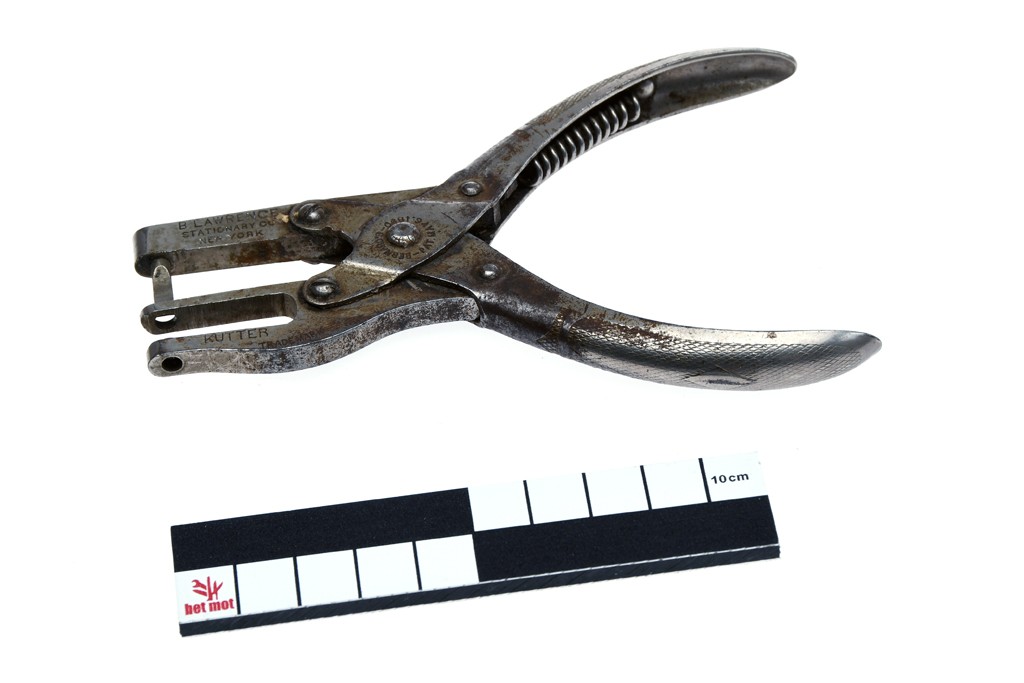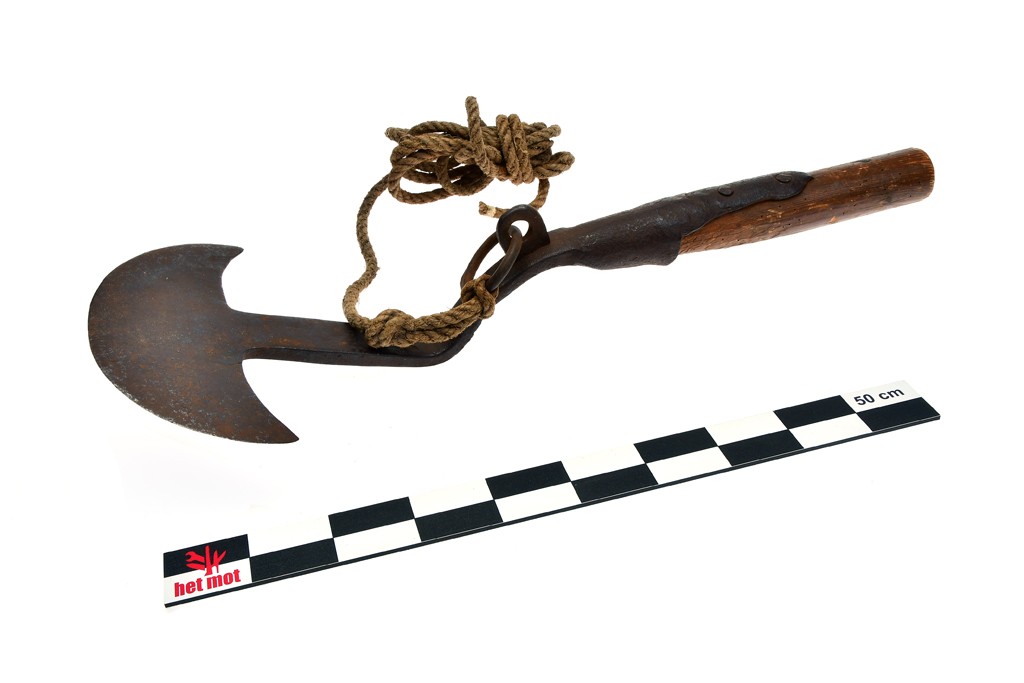ID-DOC: general search
Here you can enter a general keyword and perform a general search.
??? What are these question marks doing here? These represent tools which we know by a Dutch or French name, but who's English name is yet unknown. Suggestions are always welcome!
If you cannot find a certain tool, or if you experience other problems with this page, please let us know at info@mot.be.
Search for: tool
Showing search results 901 - 950
1,422 results found

Paint can opener
The house painter and do-it-yourselfer use a pot opener to lift the lid of
the hermetically sealed paint cans to allow air to enter and open the can.
The paint pot opener is a flat metal rod (approx. 10-15 cm) with the end
(approx. 1 cm) folded back and thinned for easier access under the lid. The
rod then serves as a lever of the first kind. If the end is not folded
over, it will be in the shape of a flat screwdriver and / or hook. Slightly
shorter models are provided with a ring to put more pressure, sometimes
they are combined with a can pierce or a bottleopener. [MOT]

Paint roller
This text can only be consulted in Dutch
<https://www.mot.be/resource/Tool/paint-roller?lang=nl>

Painter's pocket knife
This text can only be consulted in Dutch
<https://www.mot.be/resource/Tool/painters-pocket-knife?lang=nl>

Pair of fire tongs
Fire tongs can be used to move burning pieces of wood. It is quite long, so
that the hands are kept at a sufficient distance from the fire and the
burning pieces of wood. The fire tongs are often part of a fireplace set,
which can also contain an ash shovel, a fork and a brush. The fire tongs
are very different from charcoal tongs, which are lighter and often
shorter. It is therefore only intended to take a coal from the fireplace
and light the pipe with it. See also the clinker tongs. [MOT]

Pair of outside callipers
This text can only be consulted in Dutch
<https://www.mot.be/resource/Tool/pair-of-outside-callipers?lang=nl>

Palette knife
The palette knife is a spatula or trowel-shaped tool (approx. 15-20 cm
long) with a flexible blade along its entire length that the painter uses
to mix dyes on the palette and to apply paint to the canvas (1). The
spatula-shaped ones can be made of metal, wood or plastic and are also used
to scrape off wet paint with the side of the blade without damaging the
canvas. The trowel-shaped ones have a metal blade whose shape and size
(approx. 3-12 cm long; approx. 3-4 cm wide) vary greatly: it can be
triangular, diamond-shaped, oval or rectangular - with or without rounded
corners - attached to a straight handle. The latter are mainly used to
apply small dots or wide stripes of paint to the canvas. The palette knife
with narrow, rectangular blade is also available as a pocket knife. Then it
is a useful tool for testing colors. The house painter also uses a larger
spatula-shaped tempering knife, the blade of which is about 15-30 cm long,
to mix paint. [MOT] (1) With the advantage that new layers...

Pallet
Hand tool that the bookbinder uses to decorate and gild leather-bound
books. It has a T-shaped, often copper blade, the narrow (about a few mm)
end of which is slightly curved and provided with a fillet motif, fixed in
a wooden handle. After heating, the pallet is pressed on the (gilded)
leather to obtain a fillet pattern. See also the type holder. [MOT]

Pan scrubber
With a pan scrubber you can clean dirty pans or pots while washing. It
consists of a scouring pad made of galvanized iron mesh or steel wool,
which may or may not be attached to a plastic handle.See also the sink
brush for dishwashing. [MOT]

Pancake tongs
Rare plastic U-shaped pliers (approx. 10 cm long) that can be squeezed
shut. For example, a pancake can be grasped this way to be eaten. This tool
can be distinguished from the strawberry huller and print tongs of a
photographer. [MOT]

Panel plane
This text can only be consulted in Dutch
<https://www.mot.be/resource/Tool/panel-plane?lang=nl>

Paper hanger's casing knife
This text can only be consulted in Dutch
<https://www.mot.be/resource/Tool/paper-hangers-casing-knife?lang=nl>

Paper hanger's knife
Knife with a long (approx. 30 cm), spatula-shaped blade with a rectangular
cut in section, attached to a straight handle. It is used to strip
wallpaper glued in along the edge of the pasting table from the selvedge.
For this purpose, a thin metal strip was applied to the long side of the
table. See also the wallpaper knife and the paper hanger's casing knife.
[MOT]

Paper punch pliers
This text can only be consulted in Dutch
<https://www.mot.be/resource/Tool/paper-punch-pliers?lang=nl>

Paperknife
Metal, wooden, bone, ivory or plastic knife (approx. 20-25 cm long),
usually in one piece, with a flat and narrow (approx. 0.5-1 cm) blade that
tapers towards the end. The edge is not sharp and the point is relatively
blunt. With a paperknife you can easily cut open envelopes and books; it is
inserted respectively into the fold of the cover or between two uncut
leaves of a book and then cut open along the fold. Sometimes the letter
opener is equipped with a pocket knife at the other end. Another paperknife
model has a razor-sharp blade (approx. 3 cm) in a rectangular plastic
handle, which is no thicker than 4 mm. This type of paperknife is not to be
confused with the folder. [MOT]

Parallel pliers
With parallel pliers you can clamp flat metal or metal wire without
damaging it. The jaws always remain parallel so that even with thick
material all the force is distributed over the entire jaw. The teeth are
flat on the material. Springs are fitted in the legs to open the pliers.
Some pliers are equipped with a wire cutter. [MOT]

Parcel handle
This text can only be consulted in Dutch.

Paring chisel
Wide chisel with one bevel, sometimes without a neck. Since it does lighter
work than the firmer chisel, it is theoretically not beaten with the wooden
hammer, but pushed. It is also sharper than the firmer chisel. The Japanese
chisel (Japanese: tsuki nomi) is longer than the western one and is always
used with both hands. It is used for finishing mortise and tenon joints and
grooves. [MOT]

Paring chisel (marquetry worker)
Paring chisel used by the marquetry and violin maker to cut the groove into
which an inlay will be placed. It has a blade with a rectangular cross
section that is bent at the end, which is sharpened at right angles. [MOT]

Paring knife
Vegetables are peeled with a paring knife. It is a small (approx. 16-18 cm)
and light (approx. 20-25 gr) knife with a smooth edge, which lies easily in
the hand. The blade can take different shapes: it can look like a mini
French cook's knife, the edge can be straight or curved, but it always has
a sharp point to remove pits. The handle can be wood or plastic. A special
model consists of a paring knife with a movable guide. Sometimes the paring
knife is combined with a bottleopener. [MOT]

Paring spade
This text can only be consulted in Dutch
<https://www.mot.be/resource/Tool/paring-spade?lang=nl>

Pasta spoon
Wooden, stainless steel or plastic spoon with long handle (approx. 25 cm)
and 8-10 blunt teeth (approx. 2-3 cm) for removing spaghetti from the
boiling water and draining it. Some models have an opening in the center of
the spoon. The pasta spoon is placed in the pan of the freshly cooked
spaghetti and turned around so that the teeth take the strings of spaghetti
with them. Take it all over the pan to let it drain. See also spaghetti
tongs used after draining spaghetti in a colander. [MOT]

Paste rolling pin
This text can only be consulted in Dutch
<https://www.mot.be/resource/Tool/paste-rolling-pin?lang=nl>

Pastry blender
With a pastry blender you can quickly make a crumbly mass from flour and
pieces of butter, without this mixture getting hot, for eg crust or
shortcrust pastry. It consists of six relatively flexible steel wires that
are bent in a U-shape; between the ends there is a wooden or plastic
handle, which is sometimes provided with a thumb rest. By moving the pastry
blender up and down in the mass, the ingredients are mixed and the pieces
of butter or fat finely divided. Instead of the wires, there can also be
various steel blades with a curved cut. These are rigid and therefore
better suited for cutting hard chunks of fat. See also the dough grater.
[MOT]

Pastry cutting wheel
This text can only be consulted in Dutch
<https://www.mot.be/resource/Tool/pastry-cutting-wheel?lang=nl>

Pattern roll (bookbinder)
This text can only be consulted in Dutch
<https://www.mot.be/resource/Tool/pattern-roll-bookbinder?lang=nl>

Paviour's hammer
This text can only be consulted in Dutch
<https://www.mot.be/resource/Tool/paviour-s-hammer?lang=nl>

Peat scyte
This text can only be consulted in Dutch
<https://www.mot.be/resource/Tool/peat-scyte?lang=nl>

Peat spade
After the field has been mowed with the peat scythe or toothed sickle and
the turf removed with the paring spade, the peat-cutter uses the peat spade
to cut peat, which after drying is used as fuel or fertilizer. It is an
iron blade spade (approx. 15 x 20 cm), with one or two raised edges, which
is slightly curved (approx. 10-25 °) in relation to a knob or T-handle
(75-120 cm) ). The cut of the blade can be straight or pointed and, like
the spade, is inserted vertically (1) (approx. 20-25 cm) into the ground.
The result is a clod in the shape of a parallelepiped (approx. 20 x 15 x 10
cm). The raised edges serve, in addition to cutting the peat, to keep the
clod together. [MOT] (1) A spade is used to cut peat horizontally. (HOVE:
23; BORCHGREVINK: 70).

Peel
An oven peel is a wooden or metal hand tool (approx. 175-265 cm long) with
an oval or rectangular blade (approx. 15-35 cm wide) on a long handle with
which the baker used to oven the bread. The handle is long so that you can
reach the back of the oven. [MOT]

Peeling brake
This text can only be consulted in Dutch
<https://www.mot.be/resource/Tool/peeling-brake?lang=nl>

Peening machine
This text can only be consulted in Dutch. This device is used to sharpen
the scythe or Flemish scythe blade on the same principle as the whetting
anvil and the whetting hammer, but it works faster and easier. [MOT]

Peg of emergency
This text can only be consulted in Dutch
<https://www.mot.be/resource/Tool/peg-of-emergency?lang=nl>

Peg rasp
This text can only be consulted in Dutch
<https://www.mot.be/resource/Tool/peg-rasp?lang=nl>

Pelvimeter
This text can only be consulted in Dutch
<https://www.mot.be/resource/Tool/292?lang=nl>

Pencil
This text can only be consulted in Dutch
<https://www.mot.be/resource/Tool/pencil?lang=nl>

Pencil sharpener
This text can only be consulted in Dutch
<https://www.mot.be/resource/Tool/pencil-sharpener?lang=nl>

Penknife
The penknife originally served to cut the tip of a quill pen and to scrape
away ink stains from parchment or paper, like an eraser knife. It has a
narrow, sharp blade measuring between 2.5 cm and 4.5 cm in length. The
penknife is now usually a cutting knife, exceptionally with a replaceable
blade, which is used for all kinds of purposes, including as a nail knife.
A light (approx. 10 g) model, from the Christy Company, contains a blade
that can be slid into the handle in four positions to determine the length
of the blade. In addition to the large blade, many pocket knives also have
a small sharp blade that is used as a pen knife. Not to be confused with
the scalpel. [MOT]

Percussor
This tool desciption is not yet translated from the Dutch version. See also
the reflex hammer. [MOT]

Pestle for food grinder
Wooden pestle used to press food into the funnel of a grinder (e.g. meat
grinder, rotary grater, etc.). The pestle always takes the shape of the
funnel of the mill it belongs to. There are cylindrical, conical and
parallelepiped-shaped pistils. The cone-shaped pestle is distinguishable
from the cone-shaped pestle of the potato mash strainer which is smaller
and the mould for cardboard boxes. [MOT]

Pickaxe
This text on the pickaxe of a miner can only be consulted in Dutch. [MOT]

Picking knife (basket maker)
A basket maker's picking knife has a wide, curved or semicircular (approx.
4-7 cm) blade with a sharp outside. The basket maker uses the knife to cut
off the twigs sticking out of a woven basket. He places the cut on the twig
and cuts it off by an axial movement (cf. the curved knife). The picking
knife is sometimes replaced by a shoe knife (1). [MOT] (1) AUDIGER: 3;
LEROUX & DUCHESNE: 4.

Pig scraper
This text can only be consulted in Dutch
<https://www.mot.be/resource/Tool/625?lang=nl>

Pile-driver
This text can only be consulted in Dutch
<https://www.mot.be/resource/Tool/pile-driver?lang=nl>

Pill dispenser
This text can only be consulted in Dutch
<https://www.mot.be/resource/Tool/pill-dispenser?lang=nl>

Pin lifter
The pin lifter is a hand tool used by the shoemaker and upholsterer to pull
out nails. It is a small (about 20 cm long) crow bar that sticks into a
wooden handle. [MOT]

Pin spanner
This text can only be consulted in Dutch
<https://www.mot.be/resource/Tool/pin-spanner?lang=nl>

Pinch bar
The pinch bar

Pinching iron
This text can only be consulted in Dutch
<https://www.mot.be/resource/Tool/pinching-iron?lang=nl>

Pinching-iron punch
Leather workers such as the saddler use this hand tool to cut decorative
shapes from the leather. It is a steel chisel (approx. 10-15 cm long)
without handle with a serrated or corrugated blade that can be flat and
flared, semicircular or circular (cf. the punch). The cutting chisel is
placed on the leather and hit with a hammer; the desired shape is cut into
the leather. [MOT]

Pineapple wedger
This text can only be consulted in Dutch
<https://www.mot.be/resource/Tool/pineapple-wedger?lang=nl>
